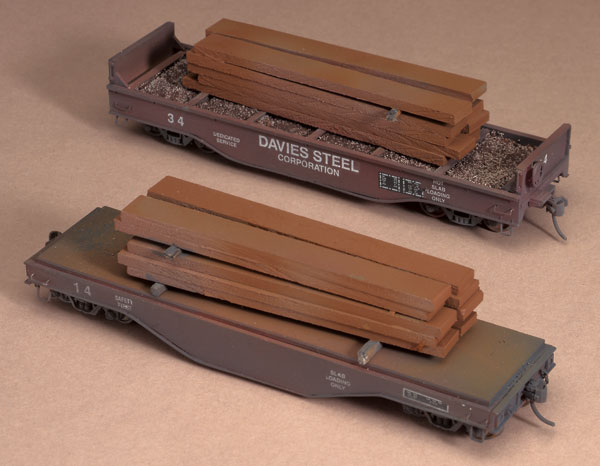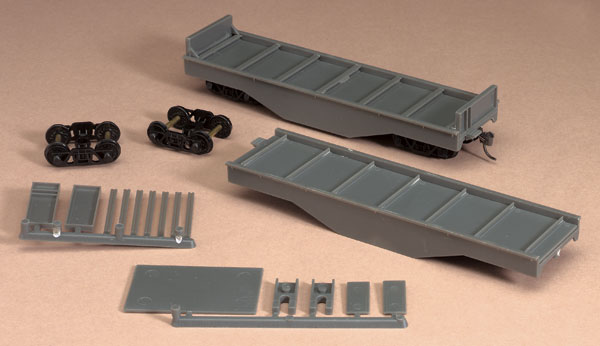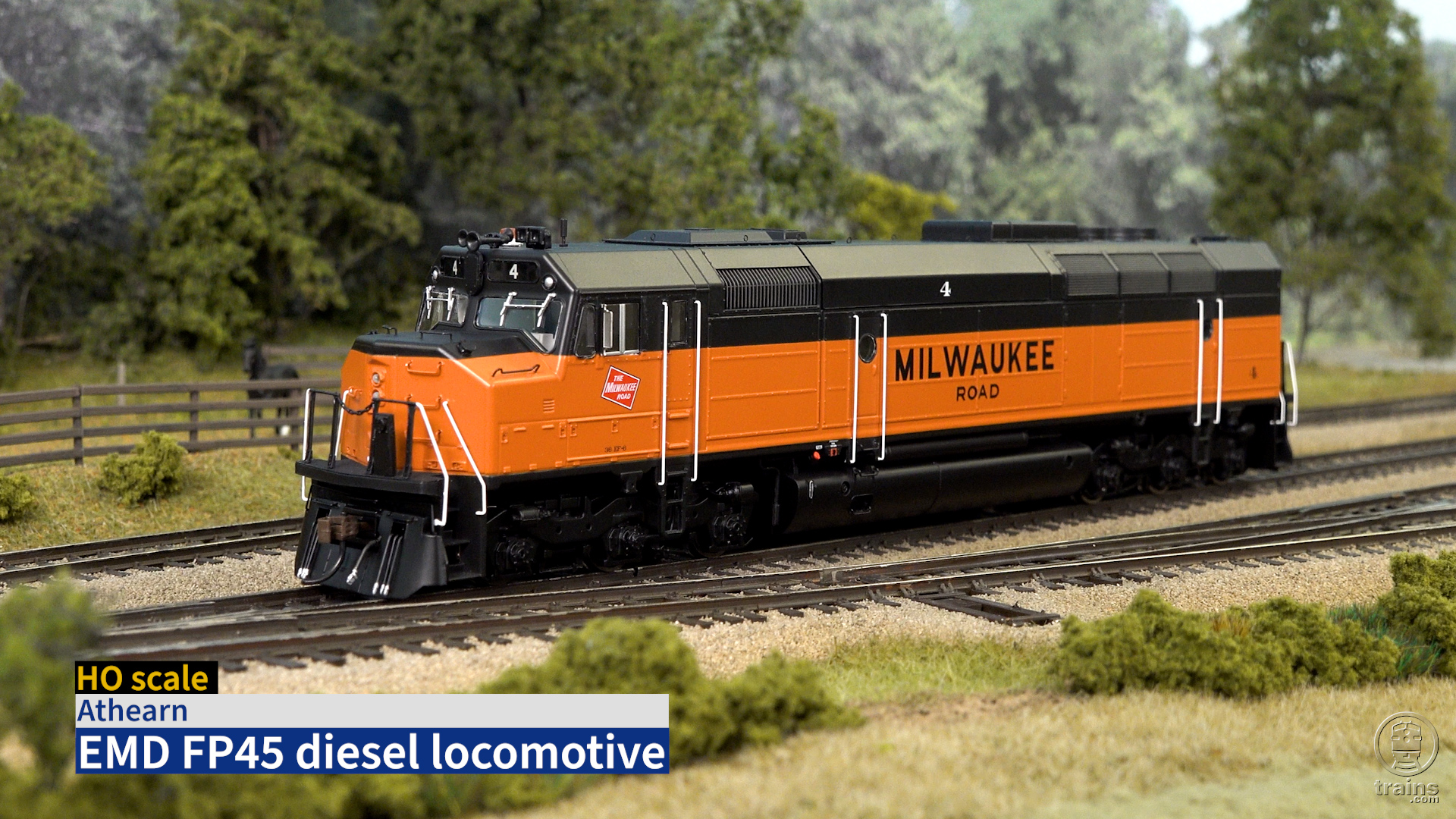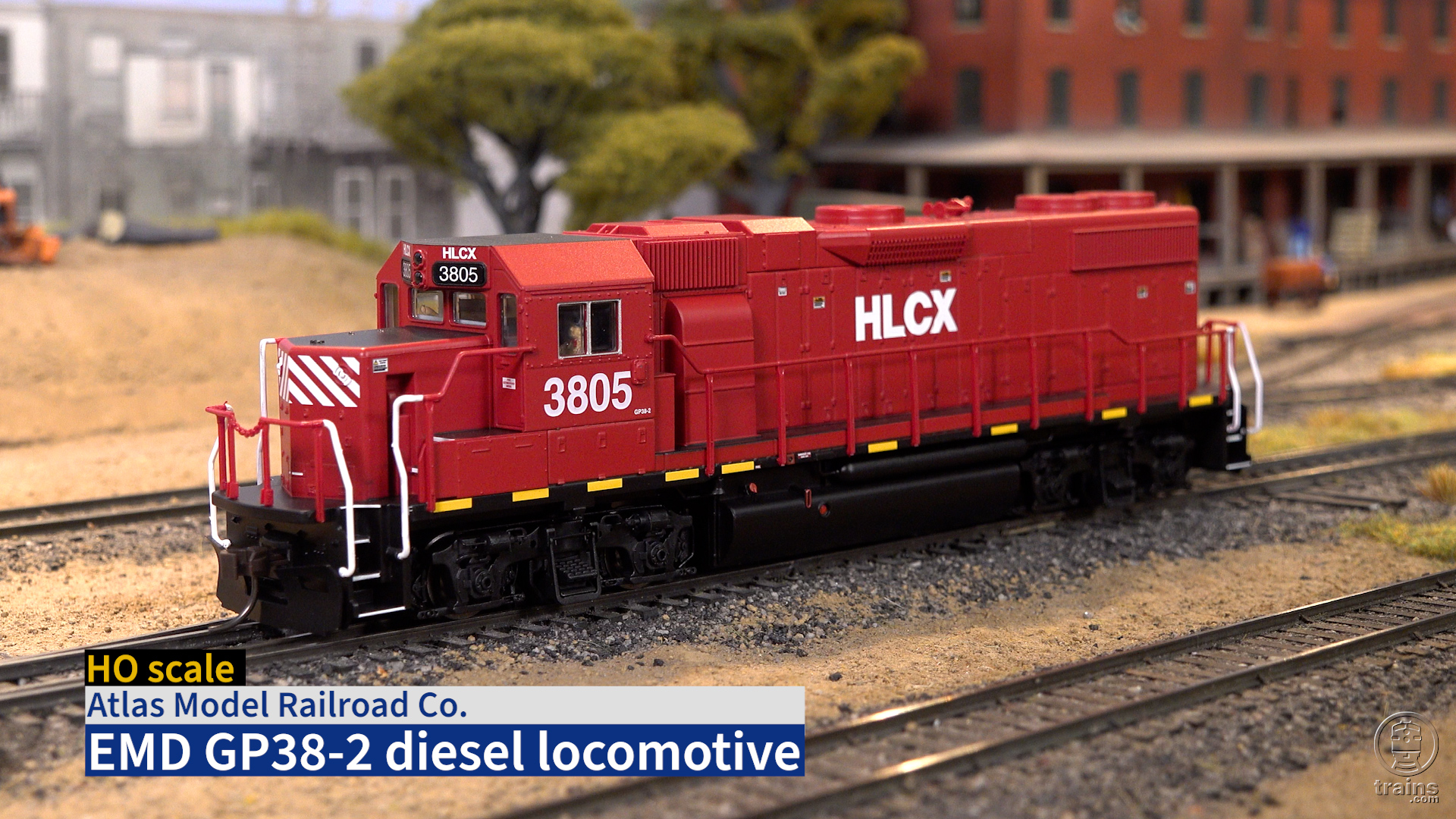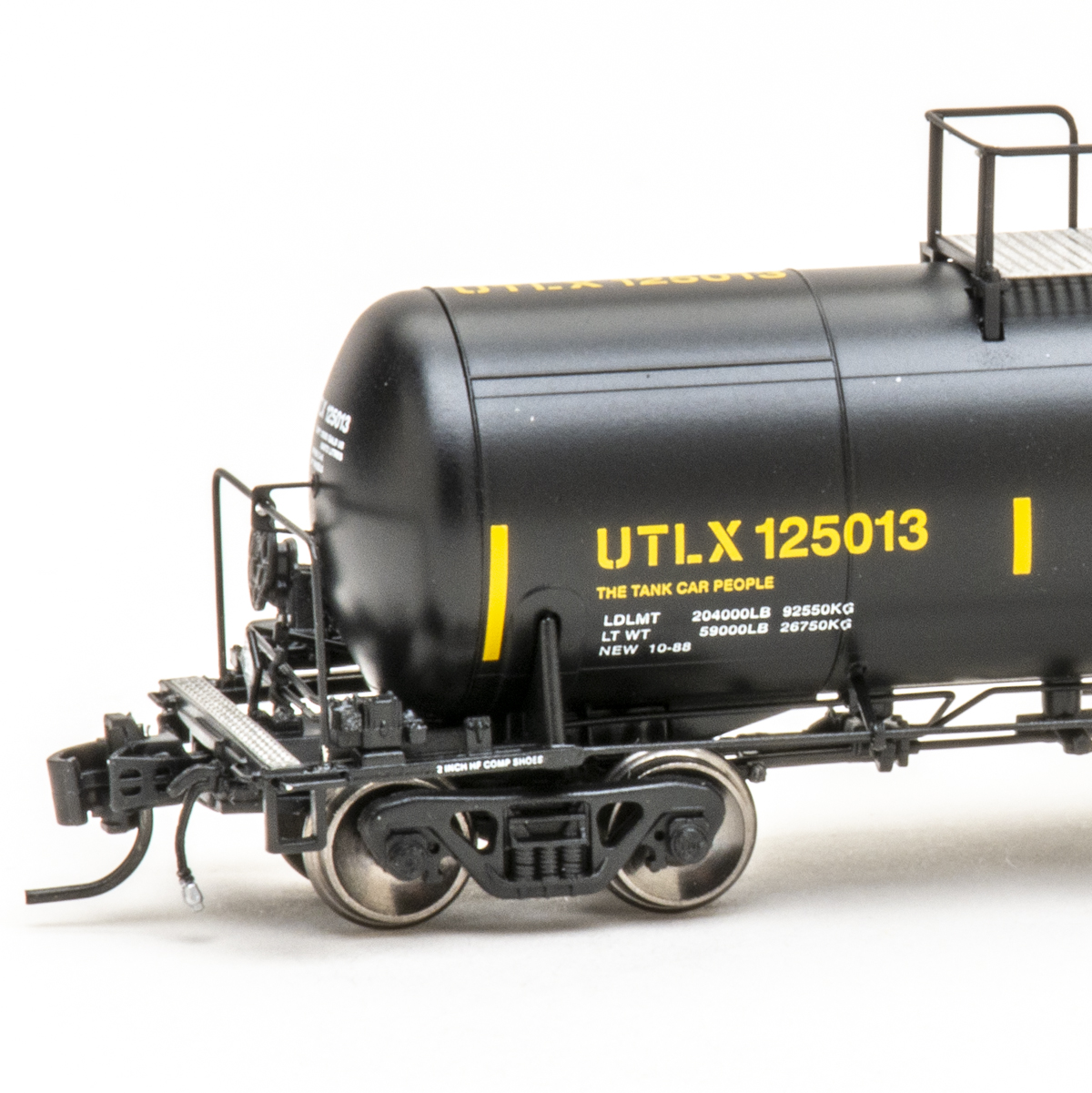The styrene kit includes a body casting with a separate deck, short bulkheads, deck crossmembers, and coupler boxes. A box is molded into the underside of the body to hold a concealed weight (not provided). Extended cushion coupler boxes are included along with InterMountain rust-colored magnetic knuckle couplers. Bowser 70-ton solid-bearing trucks are also provided.
The assembled car is a scale 39′-8″ long over the ends, 10′-3″ wide, and 7′-6″ over the bulkheads. Its deck height is 5′-6″ to the tops of the I-beam spacers.
A single 8½” x 11″ instruction sheet contains an exploded isometric drawing of the car plus three ways to install the coupler boxes. I mounted them flush with the car ends as it’s the most common arrangement. Assembling the basic kit takes only a few minutes using a hobby knife, sprue cutters, a small file, and liquid plastic cement.
There are seven deck crossmembers which represent the I-beam spacers used to keep hot slabs off the car deck. The open areas between these spacers are normally filled with a layer of fine crushed slag to help protect the deck.
Styrene sheet and structural shapes can be used to customize the model in the same ways steel mill shops fabricate and weld parts on the real cars:
- Substitute a thick deck plate to simulate a car used to move machinery or heavy steel castings.
- Create a heavy-duty gondola by installing outside-braced sides.
- Use a flat deck and 100-ton trucks to make an ingot mold car.
Many more ideas can be found in the industrial car section of Simmons-Boardman’s Car Builders Cyclopedias or in Dean Freytag’s book The History, Making and Modeling of Steel (published by Walthers and now out of print).
The model only weighs one ounce so 2¾ ounces of weight should be added to bring the model up to the National Model Railroad Association’s recommended practice of one ounce plus ½-ounce per inch of length.
Paint doesn’t last long on prototype mill cars, so they’re normally rusty, grimy black with numerous nicks and dents which reflect their hard use. Lettering is minimal and it’s often only a number applied on the ends and sides with a spray can.
Modelers of heavy industry railroading are bound to find many more uses for this handy kit.
Price: $8.95 each or $23.95 for a three pack
Manufacturer:
State Tool & Die
4780 Briar Rd.
Cleveland, OH 44135-5038
Description:
Styrene craftsman kit





